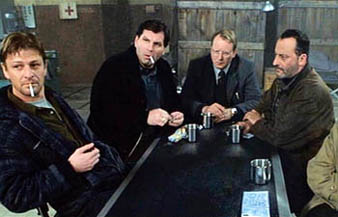|
|
Viking Night: RoninBy Bruce HallNovember 19, 2013
The screenplay was written by David Mamet (under a pseudonym) and someone named JD Zeik, but listening to the dialogue, Mamet’s cadences are as easy to pick out as an Eddie Van Halen guitar solo. Cinematography often goes unmentioned in film reviews unless it’s really good, or really bad. Here, Frankenheimer collaborated intensely with Robert Fraisse (Hotel Rwanda, Enemy at the Gates, Alpha Dog) to create a very specific shot and color palette that puts Ronin and its players under glass, in their own isolated universe of character development. Every part of every scene – dialogue, color, shot composition, stunts – all of it is constructed with the same intense attention to detail that insane people use when they recreate the Battle of the Bulge using tiny bits of plaster and wire mesh. I find that as a critic, it’s hard not to watch things with a discerning eye. Every now and then that becomes a liability, as you often seek complexity in places where there is none to be found. But sometimes, it can also help you see through all the activity and find the simplicity in something that seems deeper than it is. Ronin is the kind of film that you might dismiss on first viewing as one of those stories where lots of stuff is going on, but nothing is really happening. That couldn’t be further from the truth, because beneath all the layers, Ronin is really a very simple story with a very simple idea. And to anyone who’s ever tried to find honor in exile, that’s not nothing – that’s everything.
|

|
|
|

|
Friday, November 1, 2024
© 2024 Box Office Prophets, a division of One Of Us, Inc.


